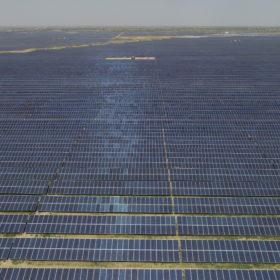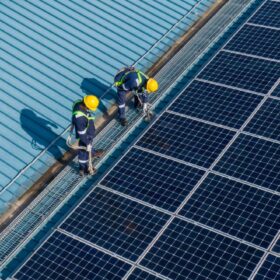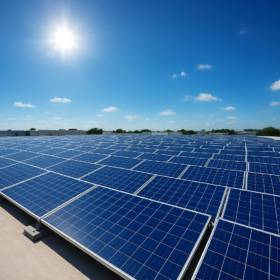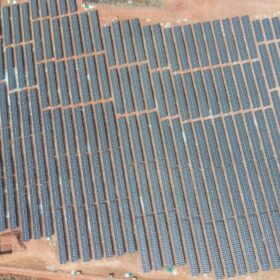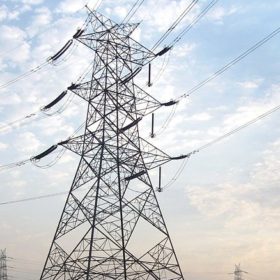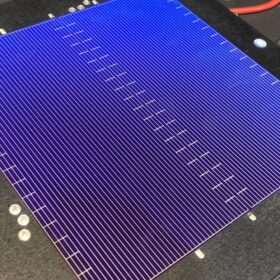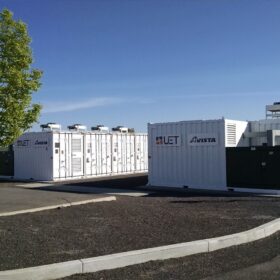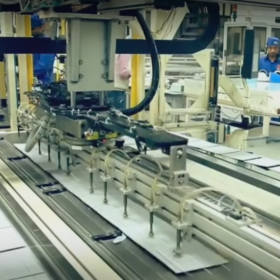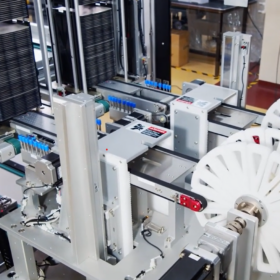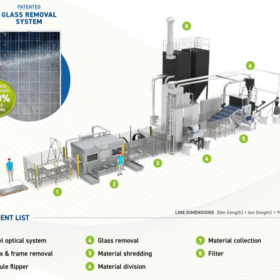ACME Solar Holdings assigned ‘AA-/Stable’ rating by ICRA
ICRA Ltd has assigned ‘AA-’ credit rating with ‘Stable’ outlook on ACME Solar Holdings’ long-term non-fund based bank facilities. The rating reflects ACME Solar’s diversified portfolio across multiple locations and offtakers (primarily central), revenue visibility from long-term power purchase agreements (PPAs), optimal generation performance and comfortable debt coverage metrics.
TotalEnergies sells 50% stake in 1.4 GW solar portfolio
TotalEnergies announced it is acquiring a 49% interest in natural gas assets in Oklahoma on the same day it announced it is selling a 50% stake in its North American solar portfolio.
SECI announces maiden debenture issue to strengthen renewable energy investments
Solar Energy Corp. of India’s maiden debenture issue received an overwhelming response with 43 bids totaling INR 2,156.75 crore, against the total issue size of INR 600 crore.
AI for climate action: Can technology save us from the crisis?
A modern grid must balance growing demand from new sources like electric vehicles (EVs) with the intermittent supply from renewable sources like solar and wind power. AI-powered smart grids use sophisticated algorithms to forecast power demand and match it with fluctuating renewable generation in real time.
Oyster Renewable secures INR 1,844 crore loan for 342 MW solar-wind hybrid project
Oyster Renewable Energy has achieved financial closure for its 342 MW solar-wind hybrid power project in Madhya Pradesh by securing a project loan of INR 1,844 crore from Union Bank of India.
How India finally switched on its electricity derivatives market
The introduction of electricity futures (derivatives) marks a significant step forward in modernizing India’s power market. The benefits are numerous: it offers a strong mechanism for hedging against price fluctuations; promotes more transparent and competitive price discovery; and improves overall market efficiency
ALMM for solar wafers: Advantage for early entrants
The Approved List of Models and Manufacturers for solar wafers (ALMM List III) could enable solar manufacturers that establish wafer capacity early to achieve superior margins in FY2029/30, as wafer demand is expected to align with broader market demand thereafter.
KPI Green secures INR 3,200 crore SBI sanction for 1+ GWp solar and hybrid projects in Gujarat
KPI Green Energy Ltd has secured a sanction of INR 3,200 crore from State Bank of India to part-finance the development of its Independent Power Producer (IPP) portfolio clean energy projects aggregating over 1 GWp in Gujarat.
Deploy grid-forming batteries now to avoid costly infrastructure later, says ESIG
Large-scale batteries with grid-forming software can sustain grid reliability as renewables replace synchronous fossil generators, says an ESIG report. The report focuses on test procedures to validate grid-forming capabilities.
Alpex Solar raises INR 260.17 crore through preferential issue
The company will utilise the proceeds to complete its ongoing expansion and achieve full-scale production of solar cells, modules, and aluminium frames.
